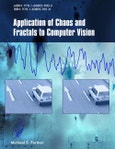This book provides a thorough investigation of the application of chaos theory and fractal analysis to computer vision. The field of chaos theory has been studied in dynamical physical systems, and has been very successful in providing computational models for very complex problems ranging from weather systems to neural pathway signal propagation. Computer vision researchers have derived motivation for their algorithms from biology and physics for many years as witnessed by the optical flow algorithm, the oscillator model underlying graphical cuts and of course neural networks. These algorithms are very helpful for a broad range of computer vision problems like motion segmentation, texture analysis and change detection.
The contents of this book include chapters in biological vision systems, foundations of chaos and fractals, behavior of images and image sequences in phase space, mathematical measures for analyzing phase space, applications to pre-attentive vision and applications to post-attentive vision.
This book is intended for graduate students, upper division undergraduates, researchers and practitioners in image processing and computer vision. The readers will develop a solid understanding of the concepts of chaos theory and their application to computer vision. Readers will be introduced to a new way of thinking about computer vision problems from the perspective of complex dynamical systems. This new approach will provide them a deeper understanding of the various phenomena present in complex image scenes.
The contents of this book include chapters in biological vision systems, foundations of chaos and fractals, behavior of images and image sequences in phase space, mathematical measures for analyzing phase space, applications to pre-attentive vision and applications to post-attentive vision.
This book is intended for graduate students, upper division undergraduates, researchers and practitioners in image processing and computer vision. The readers will develop a solid understanding of the concepts of chaos theory and their application to computer vision. Readers will be introduced to a new way of thinking about computer vision problems from the perspective of complex dynamical systems. This new approach will provide them a deeper understanding of the various phenomena present in complex image scenes.
Table of Contents
Author BiographyForeword
Preface
CHAPTERS
1. Introduction
2. Biological Vision Systems - Architecture and Signal Characteristics
3. Foundations of Chaos and Fractals
4. Behavior of Images and Image Sequences in Phase Space
5. Mathematical Measures for Analyzing Phase Space
6. Applications to Pre-attentive Vision - Using the Presence of Chaos for Attention Direction
7. Applications to Attentive Vision - Chaotic Basins of Attraction for Motion and Contextual Change Segmentation
8. Applications to Attentive Vision - Chaotic Analysis of Texture for Segmentation and Classification
9. Applications to Post-Attentive Vision - Employing Chaos for Image Registration and Object Tracking
10. More Applications to Post-Attentive Vision - Chaos Theory and Object Recognition
References
Author Index
Subject Index
Samples

LOADING...








